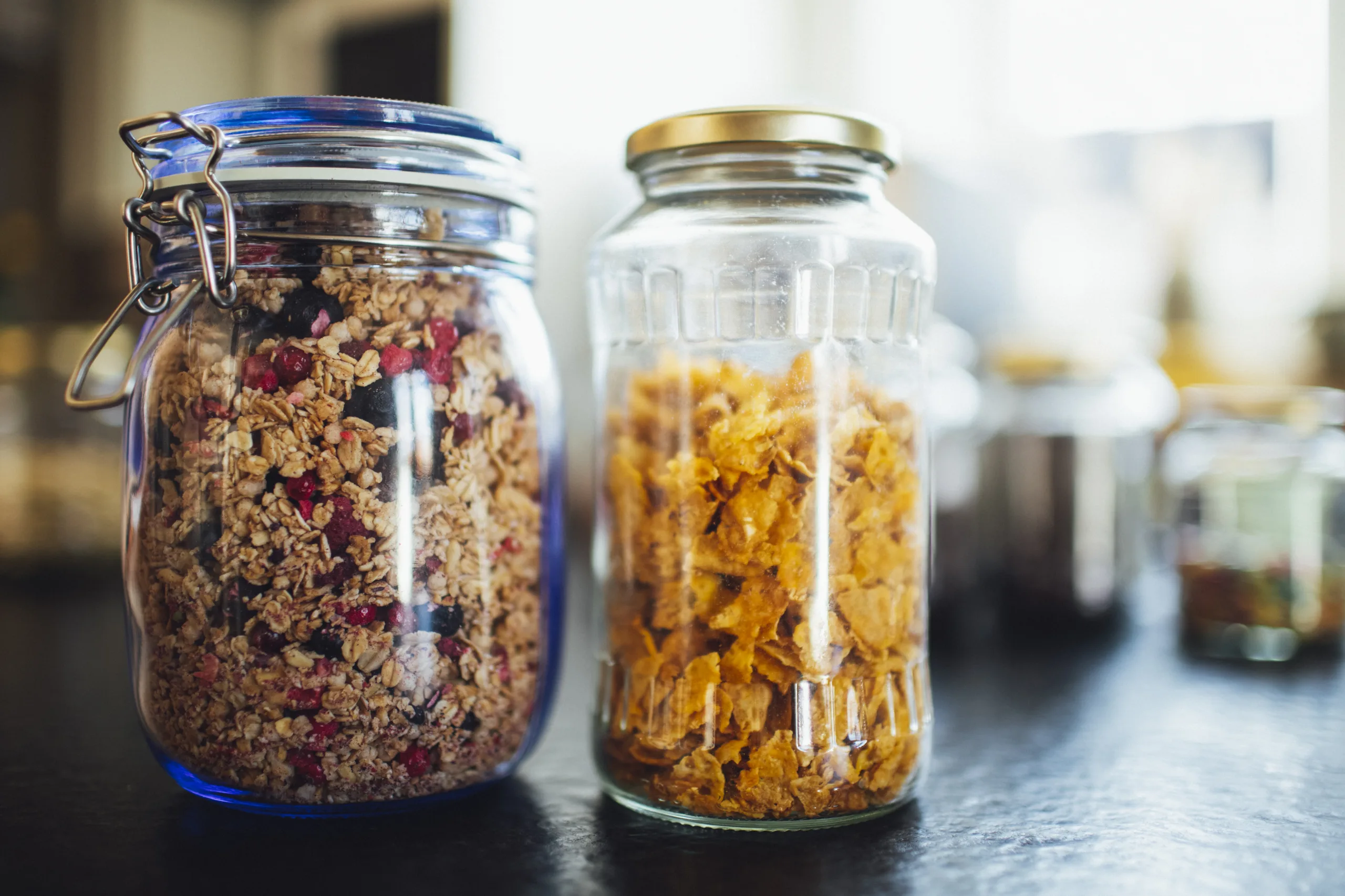Are you struggling with digestive issues? Have you tried reducing the amount of certain foods in your diet, but still feel unwell? If so, then a Low FODMAP Diet may be the solution for you. This diet has been proven to reduce symptoms of Irritable Bowel Syndrome (IBS) and other digestive issues. In this article, we will explore the advantages of a Low FODMAP Diet and how it can help improve your digestion and overall health.
A low FODMAP diet can be beneficial for those who suffer from Irritable Bowel Syndrome (IBS). The FODMAPs are short chain carbohydrates that are poorly absorbed in the small intestine and can cause digestive issues in those with IBS. A low FODMAP diet helps to reduce these symptoms by limiting the intake of foods that contain high amounts of FODMAPs. This type of diet has been found to help reduce abdominal pain, bloating, and diarrhoea in IBS sufferers. Additionally, it may also help to improve overall digestive health and quality of life.
What is a Low FODMAP Diet?
A Low FODMAP Diet is a dietary approach used to reduce symptoms of Irritable Bowel Syndrome (IBS). It involves eliminating certain types of carbohydrates called fermentable oligosaccharides, disaccharides, monosaccharides and polyols (FODMAPs) from the diet. FODMAPs are found in many common foods such as garlic, onions, wheat products, dairy products, legumes and some fruits and vegetables. By reducing or eliminating these foods from your diet, you can significantly reduce symptoms such as bloating, abdominal pain and altered bowel habits.
The Low FODMAP Diet is typically initiated by a Registered Dietitian who will provide guidance on what foods to avoid and how to reintroduce them once symptoms have been managed. The diet should be viewed as a short-term solution for IBS relief rather than a long-term plan for overall health. A Registered Dietitian can also help provide nutritional guidance for those following the Low FODMAP Diet to ensure proper nutrition and prevent the development of nutrient deficiencies.
Common Foods to Avoid on a Low FODMAP Diet
Following a low FODMAP diet may help to reduce symptoms of irritable bowel syndrome (IBS). A low-FODMAP diet eliminates some common foods that contain certain types of carbohydrates called FODMAPs. These carbohydrates can be difficult to digest and can cause digestive distress in people with IBS. To follow a low-FODMAP diet, it is important to know which foods are high in FODMAPs and should be avoided.
Some of the most common foods that are high in FODMAPs include wheat, barley, rye, onions, garlic, beans, lentils, apples, pears, peaches, mangoes, milk and dairy products made from cow’s milk. Foods such as honey and high fructose corn syrup also contain FODMAPs.
It’s also important to avoid processed foods that may contain hidden sources of FODMAPs such as artificial sweeteners or preservatives. It’s best to opt for fresh fruits and vegetables whenever possible when following the low-FODMAP diet.
Although there are certain foods that should be avoided on a low-FODMAP diet, there are still plenty of delicious options available. Many grains like quinoa and oats are low in FODMAPs and can be used as an alternative to wheat or barley. Other options like fruits like bananas or fresh vegetables like carrots are also considered safe for this type of diet.
Click here to preview your posts with PRO themes ››
The Benefits of Following a Low FODMAP Diet
Following a low FODMAP diet can provide a range of health benefits. A FODMAP is an acronym for Fermentable Oligo-, Di-, Mono-saccharides, and Polyols which are all types of carbohydrates found in certain foods. Eating a diet that is low in these carbohydrates can help with digestive issues such as Irritable Bowel Syndrome (IBS). It can also help reduce bloating and discomfort associated with eating certain types of food.
One of the main benefits of following a low FODMAP diet is that it helps to reduce the symptoms of IBS. This can include bloating, abdominal pain, constipation or diarrhea. By eliminating certain high-FODMAP foods from your diet, you will be able to reduce the symptoms associated with IBS. Additionally, following a low FODMAP diet can help improve gut health by reducing inflammation and promoting healthy bacteria growth.
Another benefit of following a low FODMAP diet is that it can help with weight loss. Since many high-FODMAP foods are also high in calories, limiting them may help with weight loss. Additionally, since this type of diet encourages you to eat more nutrient-dense foods such as fruits and vegetables, it may also lead to improved overall health and wellbeing.
Finally, following a low FODMAP diet may also help to improve mental wellbeing by reducing anxiety and stress associated with food intolerances and allergies. Eliminating certain foods from your diet may make it easier to manage any food triggers that you have which could lead to improved mental health overall.
In conclusion, there are many benefits associated with following a low FODMAP diet including helping with digestion issues such as IBS, aiding weight loss, and improving mental wellbeing. If you think you could benefit from this type of dietary change then it would be worth consulting with your doctor or nutritionist for further advice.
Introduction to Low FODMAP Diet
A low FODMAP diet is an eating plan designed to reduce symptoms of irritable bowel syndrome (IBS) and other digestive disorders. It eliminates certain types of carbohydrates, such as fructose, lactose, fructans, and polyols. These carbohydrates are known as FODMAPs and can be difficult for some people to digest. By following a low FODMAP diet, individuals can reduce their symptoms of bloating, abdominal pain, gas, constipation, and diarrhea associated with IBS.
How to Follow a Low FODMAP Diet Correctly
Following a low FODMAP diet correctly can be challenging. It is important to understand the principles of the diet and how to incorporate it into your daily routine in order to get the most benefit from it. Here are some tips on how to follow a low FODMAP diet correctly:
- Consult with a Registered Dietitian Nutritionist: A Registered Dietitian Nutritionist (RDN) with expertise in gastrointestinal disorders can help you develop an individualized meal plan that meets your nutrition needs while avoiding trigger foods.
- Keep Track of What You Eat: Keeping track of what you eat is an important part of following a low FODMAP diet. Make sure you track all food and beverage intake so that you can identify which foods cause symptoms.
- Incorporate Low FODMAP Foods into Your Diet: There are many low FODMAP foods that you can include in your diet. Focus on incorporating these foods into your meals while avoiding high-FODMAP foods.
- Experiment With Portion Sizes: Some people may find that they can tolerate small amounts of high-FODMAP foods if they eat them in moderation. Experimenting with portion sizes may help identify which high-FODMAP foods are more tolerable for certain individuals.
Click here to preview your posts with PRO themes ››
Stick With It!
It is important to remember that it may take several weeks or even months before you start seeing the benefits from following a low FODMAP diet. Stick with it and be patient!

Foods to Include in a Low FODMAP Diet
Eating a low FODMAP diet can help reduce the unpleasant symptoms of irritable bowel syndrome (IBS). This type of diet eliminates certain foods that contain certain types of carbohydrates, known as fermentable oligosaccharides, disaccharides, monosaccharides, and polyols (FODMAPs). The good news is there are still plenty of delicious food options to choose from when following a low FODMAP diet.
Fruits are an important part of any balanced diet and you’ll be glad to know many fruits are low in FODMAPs. Bananas, blueberries, grapefruit, lemons and limes, oranges, strawberries and watermelon are all examples of fruits you can safely include in your meals. Canned fruits without added sugars or syrups such as applesauce and diced peaches are also okay.
Vegetables provide essential vitamins and minerals for maintaining good health. Vegetables that are considered safe to eat on a low FODMAP diet include bok choy, carrots, eggplant, green beans, kale, lettuce varieties such as iceberg or romaine lettuce , olives , potatoes , spinach , squash , sweet potatoes , tomatoes and zucchini .
Protein is also an important part of any healthful eating plan. If you’re following a low FODMAP diet you can enjoy chicken, eggs , fish such as cod or salmon , pork , tofu and small amounts of red meat such as beef or lamb . If you’re vegetarian or vegan some plant-based proteins may be high in FODMAPs so it’s important to check labels carefully.
Grains provide important nutrients like fiber and B vitamins so it can be challenging eating grains on a low FODMAP diet. However there are some grains that don’t contain high levels of FODMAPs including buckwheat groats , cornmeal/polenta, gluten-free oats , quinoa , rice (white or brown) and gluten-free bread products made from rice flour .
Dairy products can be difficult to digest for those with IBS but there are several dairy options that are considered safe for a low FODMAP diet including lactose-free milk products like almond milk or soy milk . Hard cheeses like cheddar cheese and Swiss cheese also have lower amounts of lactose so they may be better tolerated than other dairy products. Additionally lactose-free yogurts made from almond milk or coconut milk may also be suitable for those following a low FODMAP plan.
Managing Symptoms with a Low FODMAP Diet
A low FODMAP diet is a specialized eating plan that helps reduce the symptoms of irritable bowel syndrome (IBS). The diet eliminates certain carbohydrates, known as FODMAPs, which can be difficult to digest and can trigger uncomfortable symptoms in people with IBS. By limiting or eliminating these foods, people can reduce their abdominal discomfort and improve their overall digestion.
Click here to preview your posts with PRO themes ››
Low FODMAP diets are most commonly recommended for individuals who suffer from chronic digestive issues such as bloating, gas, constipation, and diarrhea. These symptoms are generally caused by an inability to properly digest certain types of carbohydrates found in many common foods. Common FODMAPs include lactose found in dairy products, fructose found in fruits and honey, fructans found in wheat and garlic, galactans found in legumes and beans, polyols like those found in artificial sweeteners and mushrooms.
The idea behind the low FODMAP diet is to temporarily eliminate these foods from your diet to give your digestive system time to heal itself. The diet is typically followed for several weeks or months until symptoms have improved. After that period of time has passed, certain foods may be reintroduced into the diet one at a time to determine which ones may be causing the issue.
It’s important to note that a low FODMAP diet should not be used as a long-term solution for IBS or other digestive issues. It should only be used as temporary way of managing symptoms so that you can determine which specific foods are causing your issues. Once you’ve identified these triggers, you can work with a nutritionist or other healthcare professional on ways to manage your condition more effectively over the long-term.
Plan Ahead
Following a low FODMAP diet can be challenging, so it’s important to plan ahead. Take time to read food labels and research recipes before going grocery shopping. Having a good understanding of low FODMAP ingredients means you can create meals that are both tasty and healthy. Consider creating meal plans and prepackaging snacks for a quick and easy way to eat on-the-go.
Stay Hydrated
Staying hydrated is essential for overall health, but it’s especially important for those following a low FODMAP diet. When cutting out certain foods, like dairy, fruits, and vegetables, the body may become dehydrated which could lead to digestive issues. Make sure to drink plenty of water throughout the day and consider adding electrolytes to your diet if needed.
Take Your Time
Making lifestyle changes can take time and it’s important not to rush the process. If you find that certain foods cause digestive discomfort or other symptoms, then take your time as you reintroduce them into your diet. You may want to gradually increase the amount of food consumed in order to monitor any potential reactions.
Seek Support
If you are having trouble following a low FODMAP diet on your own, consider seeking professional help from a registered dietitian or nutritionist. These professionals can provide valuable guidance on how to make dietary changes in order to reduce symptoms associated with IBS or other digestive issues.

Conclusion
The Low FODMAP Diet has been proven to provide numerous health benefits for individuals with digestive issues. It can help reduce symptoms of IBS, indigestion, and other digestive disorders. Additionally, this diet can reduce inflammation in the gut, improve nutrient absorption, and increase energy levels. While there is no one-size-fits-all diet that works for everyone, the Low FODMAP Diet is a great option for individuals who suffer from digestive issues and want to adopt a healthier lifestyle.
It is important to note that it is best to work with an experienced healthcare provider when following the Low FODMAP Diet to ensure that you are getting adequate nutrition and making healthful food choices. The diet may take some time to adjust to and requires careful tracking of foods eaten so that you can determine which foods are triggering your symptoms. With dedication and commitment, however, the Low FODMAP Diet can be an effective way to improve your digestion and overall wellbeing.

